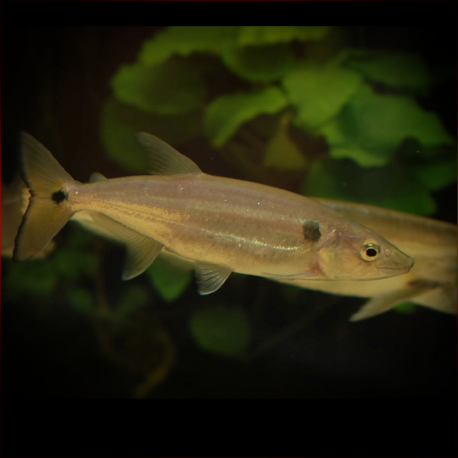More info
Datasheet
| Minimum Tank Size | 2000 litres / 528.34 US gallons |
| Maximum Size | 23.3cm / 9.17inches |
| Temperature | 22°C / 71.60°F - 28°C / 82.40°F |
| Hardness | 1.01dgH / 18ppm - 12.05dgH / 215ppm |
| pH | 6.0-7.5 |
General Description
Acestrorhynchus altus, a member of the Acestrorhynchidae family, is part of the putative A. lacustris group, closely related to A. abbreviatus, A. lacustris, and A. pantaneiro. This species is recognizable by its blackish, circular-shaped humeral spot behind the gill cover. It can grow up to 23.3cm and is primarily found in major river channels and tributaries, particularly in the lower Amazon and some of its tributaries in Brazil.
Aquarium Setup
When setting up the aquarium for Acestrorhynchus altus, it is essential to provide a habitat that mimics its natural environment. A substrate-free open water space with the majority of the tank being decor-free is recommended. Sandy substrate, leaf litter, and driftwood branches can be added for a more natural effect. Plants adaptable to sand and those that can be attached to solid surfaces are suitable additions. Adequate lighting tailored to the plant's needs and a tightly-fitted cover to prevent jumping should be included. Filtration systems, such as external canister filters or sump systems, are necessary to manage waste efficiently. Regular water changes, around 30-50% weekly, are vital for maintaining water quality.
Behaviour
Acestrorhynchus altus is relatively peaceful towards larger tank mates but can exhibit territorial behavior towards smaller or similarly sized species. They are not aggressive towards conspecifics, with juveniles often schooling together. However, older individuals tend to be more solitary but still group occasionally. Maintaining them in groups of four or more is recommended, as smaller individuals may fall prey to larger ones due to cannibalistic tendencies. Aggressive or competitive species should be avoided as tank mates, with placid fishes being the best companions.
Feeding and Diet
As obligate piscivores, Acestrorhynchus altus primarily feeds on live fish. Newly-imported specimens may initially only accept live prey, but most can be weaned onto dead alternatives. It is essential to avoid feeding them mammalian or avian meat, feeder fish, or small goldfish, as these can lead to health issues. Providing a varied diet of live and appropriately sized prey is crucial for their nutritional needs.
Reproduction & Dimorphism
Observations of the closely related A. falcatus suggest that spawning occurs in midwater, with the male swimming around the stationary female in a 'figure-of-eight' pattern. Eggs are scattered without any parental care. Sexually mature females tend to be slightly larger and deeper-bodied than males, exhibiting sexual dimorphism.
Habitat and Distribution
Acestrorhynchus altus inhabits major river channels and tributaries within the lower Amazon region and is occasionally found in flooded zones during the wet season. The species was originally thought to have a broader distribution across Brazil, Paraguay, Argentina, and Uruguay, but recent studies indicate that populations in the lower Paraná and Uruguay river basins are identified as A. pantaneiro. The full extent of their range remains uncertain due to confusion surrounding species identification.

